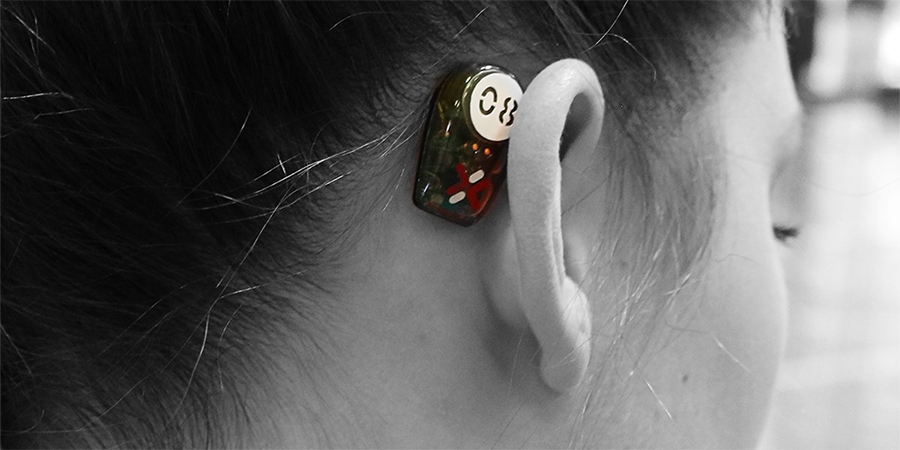Nanotechnology is evolving into an auspicious alternative to traditional system applications, bringing advanced materials and superior performance capabilities to a variety of industrial fields. Such industries are adopting nano-approaches to produce important, high-value products with increased capabilities, reliability and effectiveness at a miniaturized scale. Patterns of micromechanical-electronic techniques combined with nanoscale structures enable the design of innovative miniaturized devices and also push the boundaries of analytical methods.
The miniaturization of electronic components has made it possible to make small, portable, wearable computing devices that can be carried anywhere, anytime. This results in compact, lightweight devices with high processing power being available on the market. The devices are becoming even more portable as the parts can be hidden in clothing or embedded in handbags, making them easier to tote for long periods of time.
Sensor Miniaturization for Monitoring
Physiological monitoring
A lot of people, particularly athletes, are constantly on the lookout for innovative technologies to obtain a competitive advantage and enhance their health and performance. They are increasingly switching to wearable sensors to track their training and recovery. Wearable technologies are presently used by sports teams to assess players' internal and external workloads.
Wearable detectors for sports are still in their infancy, but they are being used to measure movement parameters such as distance, velocity and acceleration. There remains a major need to “quantify the athlete” by measuring biochemical parameters, including electrolytes and neuropeptides, all of which reflect physical exertion/fitness, fatigue and internal perceptivity.
As an example, the temperature-sensitive resistor, or thermistor, was one of the first and most commonly used sensors in animal tracking systems. A thermistor is a special type of resistance designed to impede electrical-current flow, the degree of which is controlled by temperature. Moreover, the human body produces several measurable signals that indicate activity on different systems. One such biosignal is the Galvanic Skin Response. GSR mirrors the activation of the autonomic nervous system, which is in charge of controlling functions of the human body such as heart rate, digestion and breathing. Furthermore, the phybrata sensor is a non-invasive sensor that is used for objective detection and measurement of impairments and sensory reweighting impacting several physiological systems following concussion injuries.

Phybrata Sensor

GSR Sensor
Environmental monitoring
The Wireless Sensors Network (WSN) has various uses in earth science research now that environmental sensor networks have matured. These deployments involve monitoring volcanoes, seas, glaciers and forests, among others.
For instance, in air pollution detection, WSNs have been installed in a number of cities to monitor the concentration of precarious gases. These may use ad hoc wireless networks, making them more mobile for evaluating readings in various locations.
A landslide discovery system employs a WSN to find minor soil movements and changes in several parameters that may occur before or during a landslide. So, it may be possible to predict its occurrence long before it actually happens.
Moreover, in order to identify fires, environmental sensors might be deployed in the forest. These nodes can detect temperature, humidity, and gases emitted by tree or plant fires in the surrounding environment. Early detection is crucial, as it will allow firefighters to determine when a fire begins and where it might spread.
What Is the Actual Meaning of CPU and Its Advantages?
A mini CPU is a small central processing unit that runs the many computational tasks on small computers like netbooks and smartphones — especially smartphones. Compact, lightweight and portable devices with a lot of computational power are a main focus for developers.
Increased processing power
This is maybe the most apparent advantage of having a CPU with cores — more cores mean better processing power, which can be a huge boon for users who need to do tasks such as video editing or 3D real-time and 3D post-process rendering.
Decreased power consumption
Although they offer increased performance, CPUs with more cores actually consume less power because each core can be powered down when not in use, consuming less energy than their single-core counterparts. Consequently, this leads to lower overall power consumption.
Improved multitasking abilities
Multitasking is another area where CPUs with more cores excel. Since each core can handle its own task exclusively, the overall system can juggle multiple tasks simunltaneously without any subnormality.
The Maximum Restrictions to Miniaturize a CPU or Transistor
There are actual physical limits that will eventually be reached, whether it be the highest operating frequency of a CPU, the tiniest size of a transistor, or the lowest voltage at which transistors can operate. It turns out that we can determine what these limits are, regardless of whether a device at its theoretical limit is commercially available or not. You might discover that the smallest transistor is the size of a single atom (most likely a bi-directional switch controlled by a photon), for instance, because the smallest transistor made from a semiconductor cannot be smaller than the physical elements that it is made of. Additionally, we are aware that the fastest electrical wavefronts in a wire limit the maximum operating frequency and can determine the highest bandwidth possible.
Advancement
In fact, technological development benefits consumers in countless aspects of their lives, including work, communication and the use of natural resources. These innovations in many different markets are helping society by making certain tasks easier to perform. Innovation never ends. Rather, it will continue to evolve more and more rapidly as science and technology become more innovative.
Miniaturization offers a plethora of opportunities for advancement in many areas, especially in the medical device industry. Innovative assembly techniques, tools, processes and know-how are required to meet the challenges and push the limits of miniaturization.
The success of a technology largely depends on whether society accepts or rejects the product and whether it furthers our societal journey.











